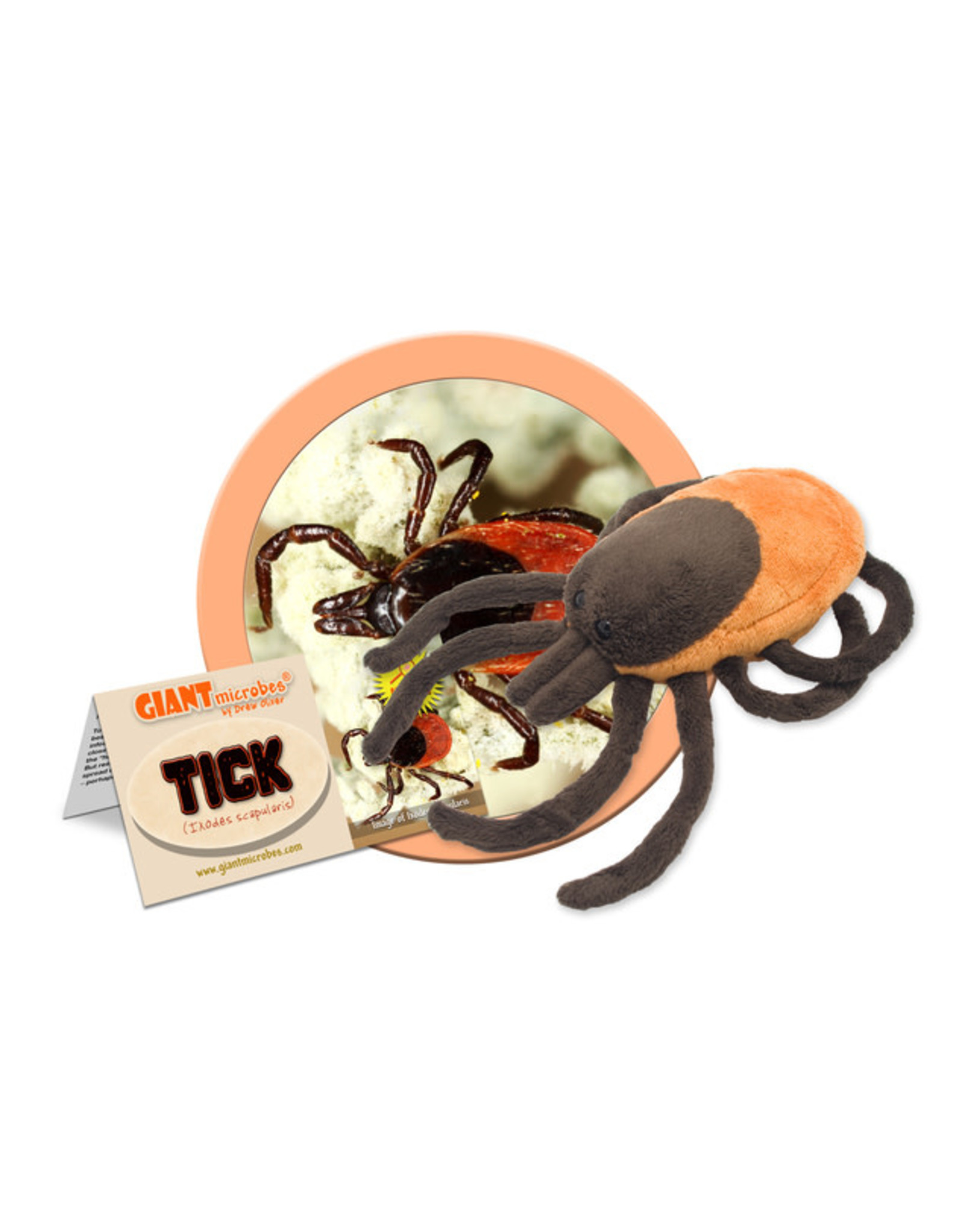Tick
| Availability: | In stock |
| Available in store: | Check availability |
FACTS: In most of the world’s dark woods and grassy plains, tiny ticks are questing in search of blood. These little vampires can be as small as pinpoints or as large as grapes – but they have an uncanny ability to sense heat and carbon dioxide, and to identify the well-travelled paths that their victims are likely to traverse. When they sense the motion of a nearby host, they drop from the tips of grasses or leaves and plunge their barbed, fang-like hypostome into their victim’s neck (or any other convenient spot) and lap up to hundreds of times their body-weight until they are sated. Or removed.
A kind of arthropod, ticks are not insects but arachnids related to scorpions and spiders. Hard ticks (such as deer ticks and dog ticks) have a plate-like scutum protecting their backs which gives them the comfort to feed for hours or days. Because diseases such as tularemia, Lyme disease, and Rocky- Mountain Spotted Fever tend not to be transmitted until dessert, there is often time to remove discovered ticks before lasting harm has been done. (Soft ticks, on the other hand, eat and run, dropping off after barely an hour.)
To remove a tick, folk remedies involving heated pins, matches, or gasoline are best avoided – they can provoke the tick into regurgitating part of its meal, and infection along with it. Instead, the tick should be grasped with a tweezers as close to the skin as possible, flipped onto its back (slowly, so as not to dislodge the “head”, or mouthparts, in the skin), and then gently pulled until it is removed. But resist the temptation to drive a stake through its heart as that can help spread disease as well. A bath of alcohol should allow you to discard a tick safely – perhaps with a clove of garlic.


